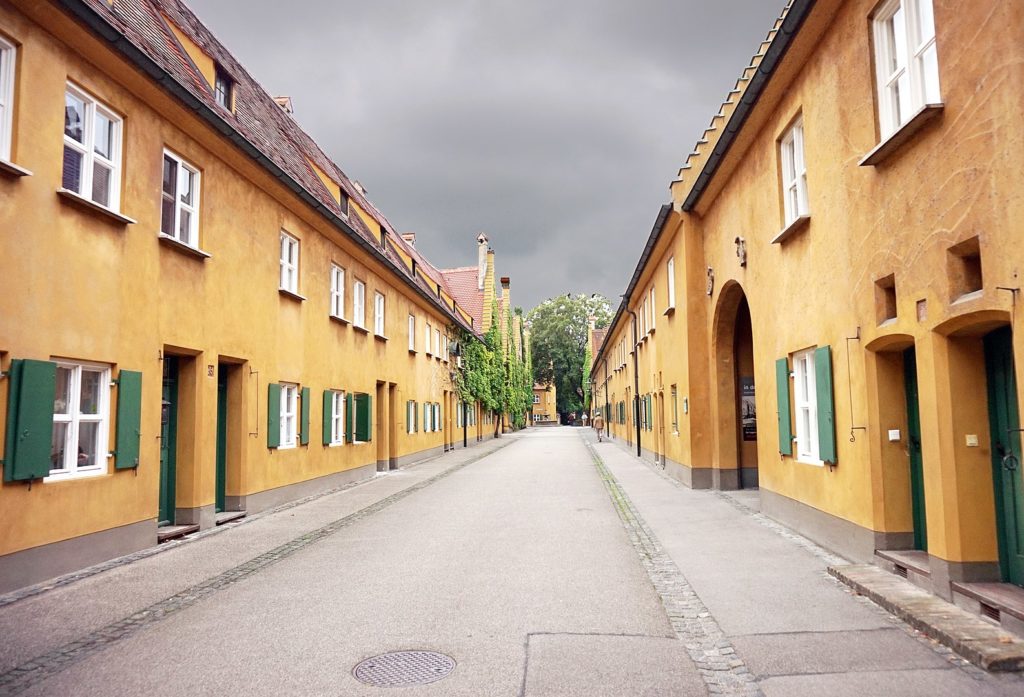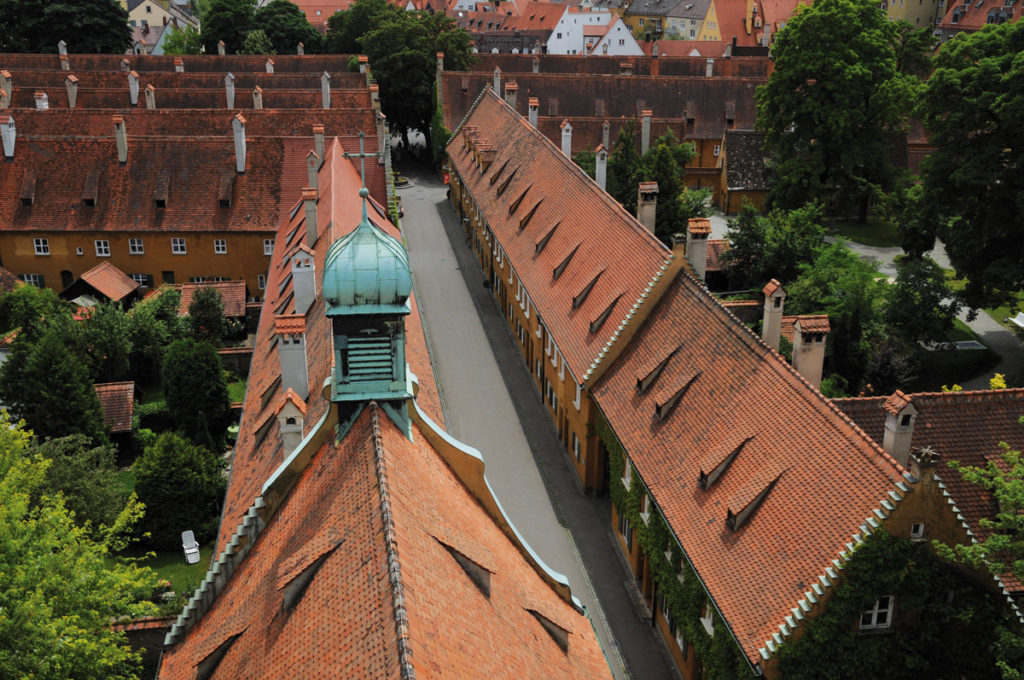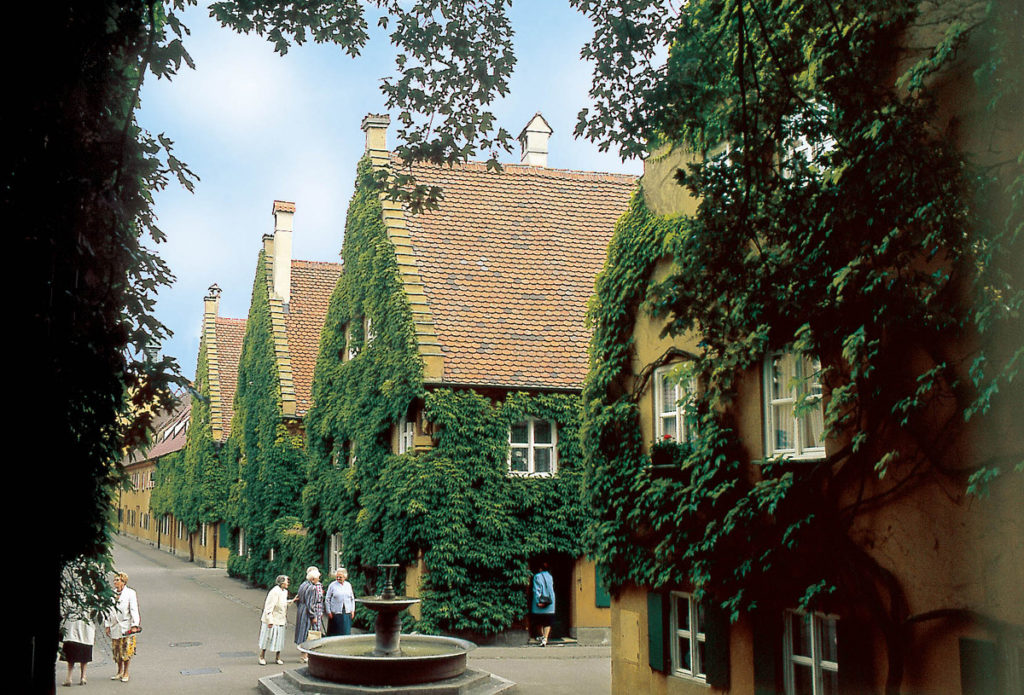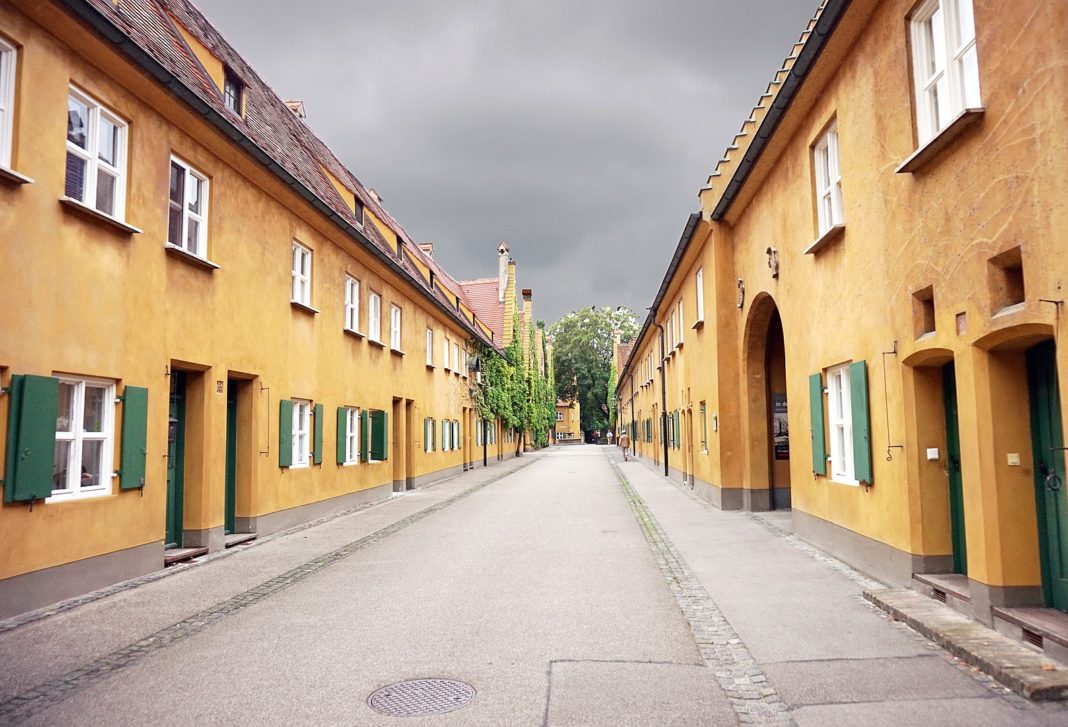The Fuggerei is the world’s oldest public housing complex still in use. It is a walled enclave within the city of Augsburg, Bavaria. It takes its name from the Fugger family and was founded in 1516 by Jakob Fugger the Younger (known as “Jakob Fugger the Rich”) as a place where the needy citizens of Augsburg could be housed.

By 1523, 52 houses had been built, and in the coming years, the area expanded with various streets, small squares, and a church. The gates were locked at night, so the Fuggerei was, in its own right, very similar to a small independent medieval town. It is still inhabited today, affording it the status of being the oldest public housing project in the world.

The rent was and still is one Rhenish gulden per year (equivalent to 0.88 euros), as well as to make three daily prayers for the current owners of the Fuggerei – the Lord’s Prayer, Hail Mary, and the Nicene Creed – and to work a part-time job in the community. The conditions to live there remain the same as they were 500 years ago: one must have lived at least two years in Augsburg, be of the Catholic faith, and have become indigent without debt. The five gates are still locked every day at 10 PM.

Housing units in the area consist of 45 to 65 square meters apartments, but because each unit has its own street entrance it simulates living in a house. There is no shared accommodation; each family has its own apartment, which includes a kitchen, a parlor, a bedroom, and a tiny spare room, altogether totaling about 60 square meters. Ground-floor apartments all have a small garden and garden shed, while upper-floor apartments have an attic. All apartments have modern conveniences such as television and running water. One ground-floor apartment is uninhabited, serving as a museum open to the public. The doorbells have elaborate shapes, each being unique, dating back to before the installation of streetlights when residents could identify their door by feeling the handle in the dark.
According to the Wikipedia















